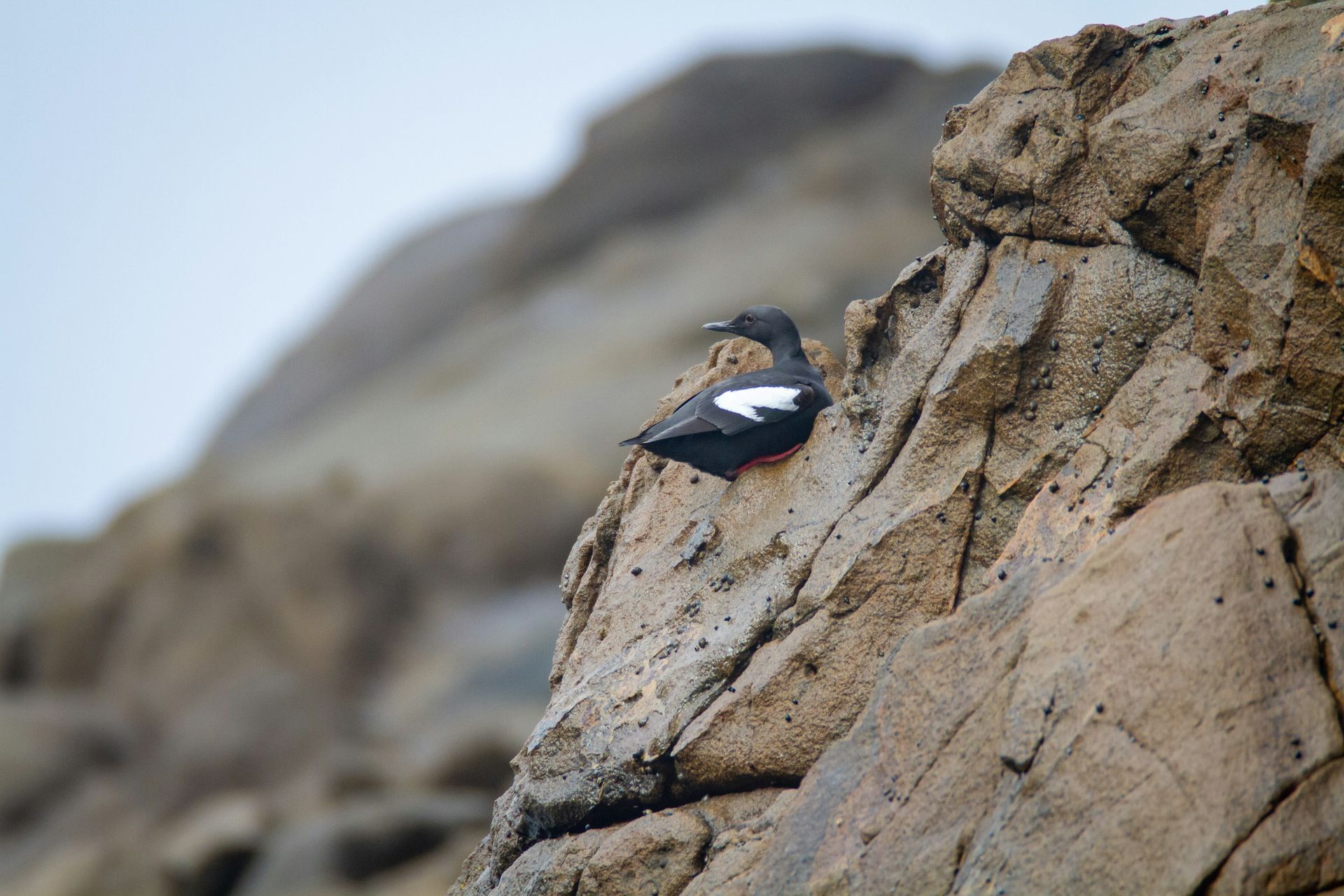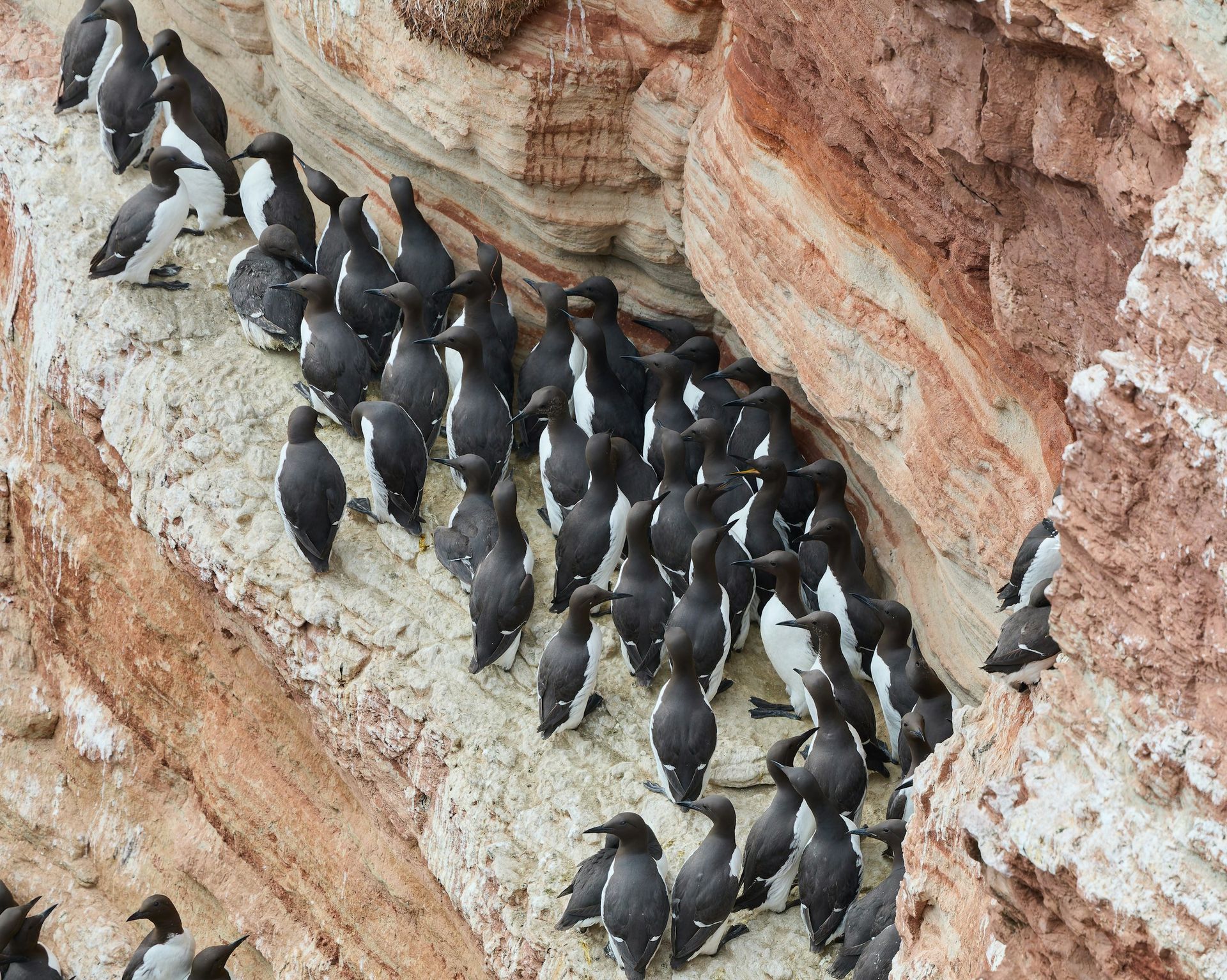Murres are seabirds known for their sleek bodies, deep-diving abilities, and cliffside nesting colonies. Found along the northern coasts of North America, Europe, and Asia, murres thrive in cold marine environments and play a critical role in maintaining healthy fish populations. Common species include the Common Murre and the Thick-billed Murre.
Murres are medium-sized seabirds, measuring around 15-18 inches in length with a wingspan of up to 28 inches. Their black-and-white plumage provides excellent camouflage against the sea and rocky cliffs. Murres are exceptional divers, using their wings to propel themselves underwater in pursuit of small fish and squid, which make up the majority of their diet.
Murres nest in dense colonies on narrow cliff ledges, laying a single pear-shaped egg that is uniquely colored and patterned to prevent it from rolling off the ledge. Both parents take turns incubating the egg and feeding the chick once it hatches. Young murres fledge by leaping off the cliffs into the sea before they can fully fly, accompanied by their parents.
Natural predators include gulls, foxes, and raptors, while human-related threats such as oil spills, fishing net entanglement, and climate change pose significant risks. Despite these challenges, murres have shown resilience and adaptability in many regions.

For your safety and the well-being of wildlife, please observe animals from a distance and avoid touching or disturbing them. If you encounter an animal that appears injured or in distress, contact a licensed wildlife rescue organization for guidance before intervening.
Found An Animal? Not sure how to help a wild animal in need? Learn when to step in, who to call, and how to help safely.
Did You Know?
- Murres can dive to depths of over 300 feet in search of fish.
- Unlike many seabirds, murres do not build traditional nests; they lay their eggs directly on bare rock.
- Their pear-shaped eggs are designed to spin in a tight circle, reducing the risk of rolling off cliffs.
- Murres spend most of their lives at sea, only coming ashore to breed.
- Thick-billed Murres are known for their endurance and can remain underwater for over a minute during dives.
- Murres use their wings for both flying and underwater swimming, making them highly efficient hunters.
- They are known to form large, mixed-species flocks with other seabirds while foraging.
- The color and pattern of each murre egg is unique, allowing parents to recognize their own.
- Murres can fly at speeds of up to 50 miles per hour despite their short, stiff wings.
Problems Faced In The Wild
- Oil Spills: Contaminated feathers reduce buoyancy and insulation, leading to hypothermia.
- Fishing Gear Entanglement: Discarded nets and lines pose serious risks to diving seabirds.
- Climate Change: Rising sea temperatures affect fish populations and disrupt breeding success.
- Human Disturbance: Increased boat traffic and recreational activities can disturb nesting colonies.
- Pollution: Plastic debris and chemical contaminants harm murres and reduce prey availability.
- Predation: Eggs and chicks are vulnerable to predators such as gulls and foxes.
Tips For Cohabitation
- Support Clean Oceans: Reduce plastic waste and participate in beach cleanups.
- Limit Boat Traffic Near Colonies: Avoid disturbing nesting areas during the breeding season.
- Dispose of Fishing Gear Responsibly: Prevent entanglement by keeping waterways clean.
- Reduce Chemical Runoff: Minimize the use of harmful chemicals that can enter marine ecosystems.
- Participate in Citizen Science: Help monitor seabird populations and report sightings.
- Educate the Community: Share the importance of seabirds in maintaining healthy marine ecosystems.



